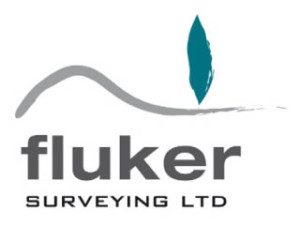Common Issues In Cross Lease Agreements and How to Resolve Them
Cross lease agreements have been a popular form of property ownership in New Zealand, particularly for residential properties developed before the 1990s. However, they come with several complexities and challenges like restrictions on altering your home, even if you hold legal ownership. Understanding these issues and how to address them is crucial for maintaining property value and avoiding disputes.
Common Issues in Cross Lease Agreements
Cross lease titles can lead to disputes and even legal complications, particularly when changes to a property are not properly documented in the title or flat plan. Here are some common issues that lease co-owners often encounter:
Lack of Clarity in Lease Provisions
Cross lease agreements often contain outdated or ambiguous provisions. For instance, terms related to property boundaries, exclusive use areas, and shared responsibilities are not always clearly defined. This lack of clarity can lead to misunderstandings and disputes between leaseholders.
Alterations Without Consent
One common issue arises when a leaseholder makes alterations to their property (e.g., extensions or structural changes) without obtaining the consent of other cross lease owners. These unauthorised changes may breach the agreement and render the cross lease title defective or outdated, causing significant complications.
Disputes Over Shared Areas
Cross lease properties typically include shared areas, such as driveways, gardens, or common recreational spaces. Disagreements can arise over various aspects, such as the allocation of maintenance costs, the specific usage of the shared spaces, or modifications to these areas. For example, one leaseholder might wish to install additional landscaping or even use the shared driveway for parking, which could conflict with the interests or needs of other leaseholders.
Outdated Survey Plans
Many cross lease agreements are accompanied by old survey plans that no longer accurately reflect the current state of the property. These plans, often created decades ago, may not include subsequent additions, alterations, or modifications made to the building footprint, such as extensions, decks, or garages.
This discrepancy can create significant complications during property transactions, as potential buyers or lenders may require accurate and updated plans to proceed. It’s crucial for property owners to regularly review and update their cross lease plans to ensure compliance and avoid potential legal or financial challenges.
Difficulty in Selling or Financing
Buyers and lenders often perceive cross lease properties as less desirable due to their complexity. If the lease agreement or survey plan is defective, it can delay or even prevent property sales or refinancing.
Easement and Access Issues
Access arrangements, such as shared driveways or pathways, are a common feature of cross lease properties. These easements provide essential access to and from the individual units, and their proper definition and maintenance are critical for avoiding disputes. However, issues often arise when the easements are poorly defined in the legal documents, leaving room for ambiguity about who can use them, under what conditions, and who is responsible for their upkeep.
For example, disagreements may occur if one leaseholder uses the shared driveway for parking or obstructs access for others. Similarly, disputes can arise over the costs and responsibilities for repairs, resurfacing, or clearing debris from the easement.
Resolving these issues often requires careful negotiation, clear communication, and, in some cases, legal intervention.
How to Resolve Cross Lease Issues
Addressing issues in cross lease agreements is essential for protecting your property investment and maintaining good relationships with co-owners. Follow these steps to effectively address issues in a cross lease ownership:
- Engage a property lawyer to review the cross lease agreement and related documents thoroughly to understand the rights and responsibilities of each leaseholder.
- Communicate openly with co-owners to discuss and resolve concerns before they escalate into disputes. Collaborate with other leaseholders to draft a clear agreement outlining responsibilities for maintaining shared areas. Having a written maintenance plan can prevent disputes.
- Obtain consent for alterations. If you plan to make changes to your property, obtain written consent from all other cross lease owners before proceeding. Ensure that any modifications are also updated in the survey plans.
- If the existing survey plan is outdated or inaccurate, engage a licensed cadastral surveyor, like Fluker Surveying, to create an updated plan. This ensures the lease reflects the true boundaries and structures of the property.
- Consider converting to Freehold. Converting a cross lease title to freehold eliminates many of the complexities associated with shared ownership. While the process involves significant investment, it offers long-term benefits, such as increased property value and simplified ownership.
Consult with Fluker Surveying to Resolve Cross Lease Issues
At Fluker Surveying, we specialise in resolving cross lease issues and facilitating conversions to freehold titles. From conducting land surveys and assisting with resource consent applications, council approvals, property boundary and easement issues to updating outdated flat plans, our team is always available every step of the way.
By partnering with us, you can ensure your property is accurately represented and free of the common pitfalls associated with cross lease agreements.
Call us at 09 427 0003 to get in touch.



